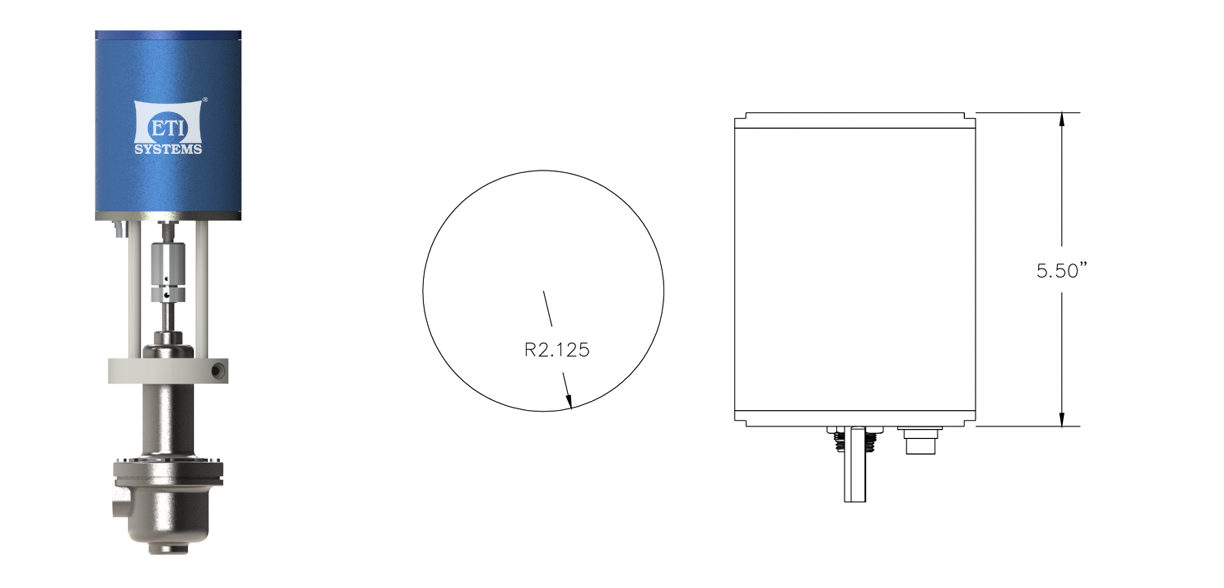Industrial Automation: Embracing the Power of Industrial Automation for Efficient Operations
Welcome to the future, where machines take on the heavy lifting while humans focus on innovation. Industrial automation has revolutionized the way businesses operate, paving the way for unprecedented efficiency and productivity. From robotic arms assembling intricate machinery to AI-driven systems optimizing supply chains, this technological marvel has become an integral part of countless industries. In this blog post, we delve into the world of industrial automation, exploring its incredible power and how it is reshaping operations across various sectors. Join us as we uncover a new era of streamlined processes and unparalleled possibilities!
What is Industrial Automation?
Industrial automation is the use of control systems, such as computers or robots, to perform a task that would otherwise be completed by a human. Industrial automation has been used in a variety of industries, including manufacturing, automotive, food and beverage, pharmaceuticals, and more.
The benefits of industrial automation include increased productivity, improved quality, reduced labor costs, and improved safety. For example, a company that uses industrial automation to manufacture products can produce more products in less time than a company that does not use industrial automation. Additionally, automated systems can often produce products with fewer defects than products manufactured by human workers. Automated systems can also be programmed to perform tasks that are too dangerous for humans to perform, such as working with hazardous materials.
There are several types of industrial automation systems available on the market today. These include assembly line robots, material handling robots, welding robots, and more. Each type of system has its own advantages and disadvantages. For example, assembly line robots can be used to increase production speed but they cannot be used for tasks that require dexterity or precision. Material handling robots can be used to move heavy objects but they cannot be used for tasks that require delicate movements.
When choosing an industrial automation system for your business, it is important to consider your specific needs and objectives. You should also consider the cost of the system and the level of training required for your employees who will be using the system.
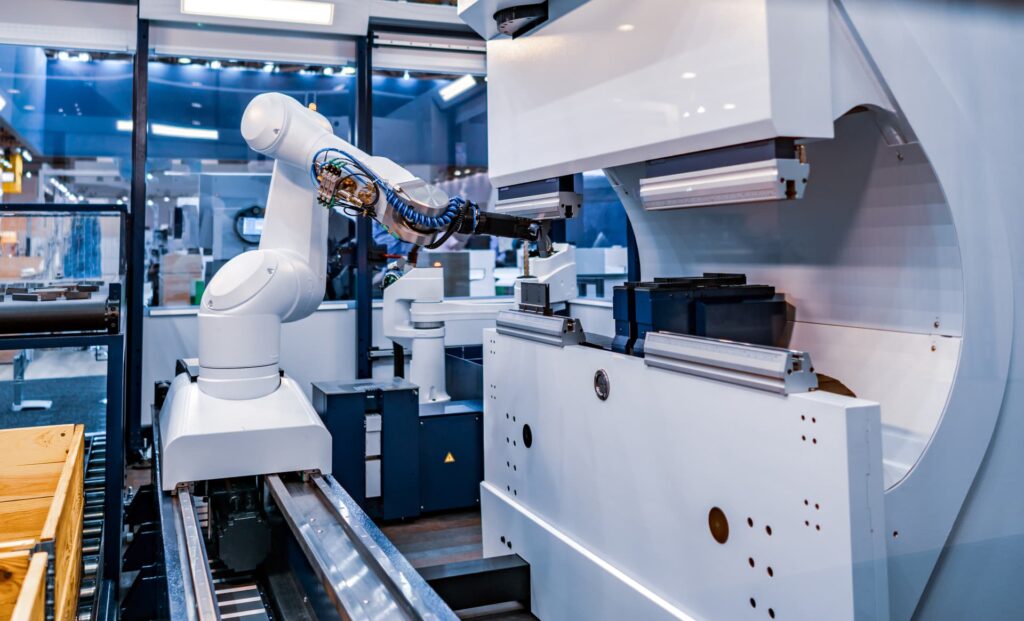

Benefits of Industrial Automation
There are many benefits of industrial automation that make it an attractive option for businesses looking to streamline their operations. Perhaps the most significant benefit is the increased efficiency that can be gained by automating tasks that are traditionally performed manually. This can lead to reduced costs and improved quality control. Additionally, industrial automation can help to improve safety in the workplace by reducing the potential for human error. Businesses that embrace industrial automation can stay competitive in today’s global marketplace.
Technologies Used in Industrial Automation
The technologies used in industrial automation are constantly evolving to meet the needs of modern industry. Some of the most common technologies used in industrial automation include:
- Programmable logic controllers (PLCs): PLCs are one of the most versatile and commonly used technologies in industrial automation. They are used to control a wide variety of processes, from simple on/off functions to complex sequences involving multiple steps and processes. PLCs can be programmed to perform virtually any type of control function required by an industrial process.
- Distributed control systems (DCSs): DCSs are similar to PLCs in that they are used to control a variety of processes, but they differ in that they use a distributed network of controllers instead of a single central controller. This allows for greater flexibility and scalability in terms of process control.
- Supervisory control and data acquisition (SCADA) systems: SCADA systems are used to monitor and control large-scale industrial processes from a central location. They typically consist of a central computer system that is connected to a network of remote terminals or devices. SCADA systems can be used to track process parameters, such as temperature, pressure, flow rate, etc., as well as to control process equipment such as pumps, valves, etc.
- Human-machine interfaces (HMIs): HMIs are used to interface between humans and machine-based systems, such as PLCs or SCADA systems.
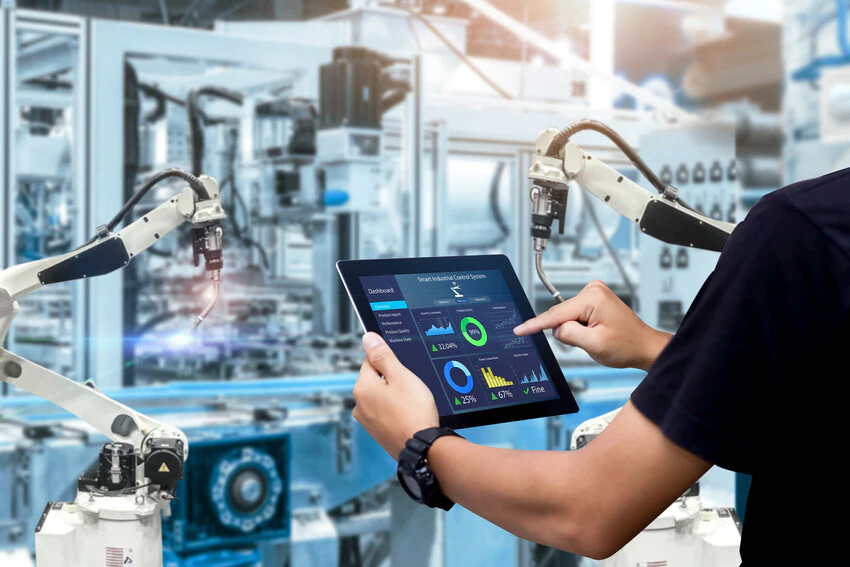

Challenges and Opportunities of Industrial Automation
The industrial sector has been undergoing a digital transformation for some time now. However, the process of automating factories and other production facilities has been relatively slow. This is due to the high cost of investment and the need for specialized skillsets. Nevertheless, there are several benefits that can be derived from industrial automation.
One of the main challenges facing industrial automation is the high cost of investment. In order to automate a factory or production line, a significant amount of money is required for equipment and software. Furthermore, there is a need for skilled labor to operate and maintain the system. This can be a challenge for small and medium enterprises that do not have the necessary resources.
Another challenge is the lack of standardization in the industry. This means that different manufacturers use different technologies and protocols for their products. This can make it difficult to integrate different systems and components. As a result, there is a need for interoperability standards that would allow different systems to communicate with each other seamlessly.
Despite these challenges, there are several opportunities that can be exploited with industrial automation. One of these is the increased efficiency in operations. Automated systems can help to reduce errors and improve quality control. Additionally, they can also help to speed up production processes. This can lead to cost savings in terms of time and resources. Moreover, automated systems can also help to improve safety in factories by reducing the risks of human error.
Industrial automation presents both challenges and opportunities for businesses
How to Implement Industrial Automation
Industrial automation has been around for quite some time, but it is only recently that this technology has started to be embraced by manufacturers and other industrial operations. There are many benefits to implementing industrial automation, including improved efficiency, reduced costs, and increased safety.
If you’re considering implementing industrial automation in your operation, there are a few things you should keep in mind. First, you need to identify the areas of your operation that would benefit most from automation. Once you’ve done that, you can start looking at different automation solutions and technologies to find the best fit for your needs.
Once you’ve selected the right solution for your operation, it’s time to start implementation. This can be a complex process, so it’s important to work with a reputable provider who can help you every step of the way. They will be able to provide you with the necessary training and support to ensure a successful implementation.


Case Studies of Successful Industrial Automation Projects
Industrial automation has been a game-changer for many businesses. By automating repetitive and time-consuming tasks, businesses have been able to achieve greater efficiency and productivity. Here are some case studies of successful industrial automation projects:
- XYZ Company: XYZ Company implemented an industrial automation solution to automate the packaging of their products. This helped them to achieve a 25% increase in productivity.
- ABC Corporation: ABC Corporation installed an industrial automation system to automate the production of car parts. This helped them to achieve a 30% reduction in production costs.
- DEF Limited: DEF Limited implemented an industrial automation solution to automate the sorting and stacking of boxes. This helped them to improve their output by 15%.
Conclusion
Industrial automation is the wave of the future for efficient operations. By embracing its power, businesses can optimize their processes, increase productivity and profitability, reduce errors and costs associated with manual labor, enhance safety in hazardous working conditions and create a better work environment for employees. With an experienced team of professionals to assist you in implementing industrial automation solutions that meet your specific needs, it’s never been easier to take advantage of this powerful technology. Investing in industrial automation now will help ensure that you stay ahead of the competition as well as make sure you’re ready for any challenge the market throws your way.
Our Products
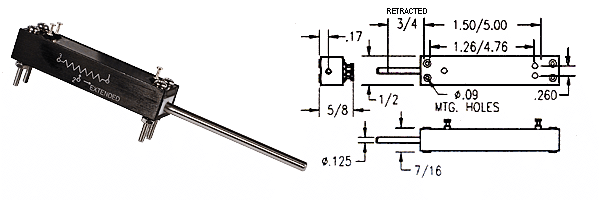
Conductive Plastic Element Black Anodized Aluminum Body, Stainless Steel Shaft, Gold Plated Terminals Recommended for Test and Lab Equipment, Industrial Applications, Medical Equipment (non-life support) Life Expectancy: 20 million strokes Resistance Tolerance: 20% standard (10% Available) Linearity Tolerance: .5% to 1.5% standard (0.3% to 1.0% Available) Power Rating: 0.2 to 1.2 Watt Electrical Stroke: 1″ […]
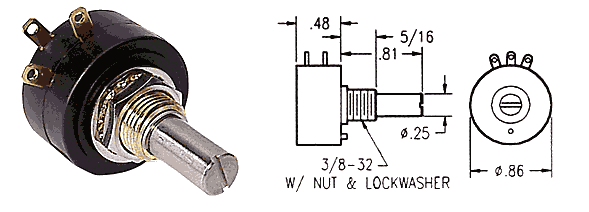
Conductive Plastic Element. Gold Plated Terminals. High Temp. Thermoplastic Housing. Stainless Steel Shaft. Recommended for Medical Equipment (non-life support), Robotics, Industrial, Test and Lab Equipment. Life Expectancy: 10 million turns Resistance Tolerance: ± 10% standard ( ± 10% available) Linearity Tolerance: ± 1.0% standard ( ± 0.5% available) Electrical Angle: 320º ± 5º Mechanical Angle: […]
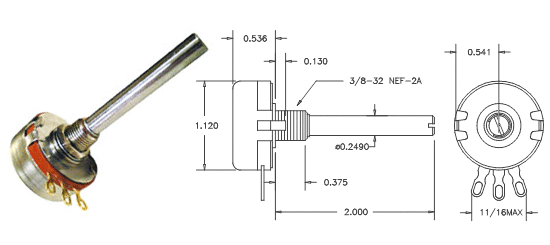
Hot molded carbon element Gold-plated terminals Stainless-steel shaft and housing Quality meeting or exceeding MIL-R-94 – QPL listed Rotational Life: 25,000 Resistance Tolerance: ± 10% or ± 20% Operating Temperature Range: -65°C to +125°C Power rating: 2 watts Insulation Resistance – dry: 10K Meg; wet: 100K Meg Dielectric Strength: 900 VRMS Starting Torque: 1 oz/in […]

Hot molded carbon element One piece housing and bushing Stainless-steel shaft Quality meeting or exceeding MIL-R-94 – QPL listed Rotational Life: 25,000 Resistance Tolerance: ± 10% or ± 20% Operating Temperature Range: -65°C to +125°C Power rating: 0.5 watts Insulation Resistance – dry: 10K Meg; wet: 100K Meg Dielectric Strength: 750 VRMS Operating Torque: 0.5 […]

MG22 Concentric Turns Counting Dial Counts up to 20 turns. One Piece Mounting. Aluminum Housing. Black Nylon Knob. Numbers are White on Black Background. Over the Center Lock Available. Diameter – 7/8″; Extension from Panel – 1.0″ Maximum Panel Thickness – 1/4″ Weight: .2 oz
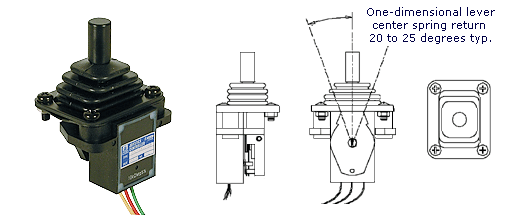
Electrical Specifications: 10K ohm precision potentiometer Single axis joystick Cylindrical knob Linearity (independent): ± 5.0% Lever Electrical Angle: 40° Max. Resolution: Essentially Infinite Mechanical Specifications: ± 20° from center deflection angle Life expectancy: 5 million operations Spring return to center Housing material: High temp. thermoplastic IP65 Rating
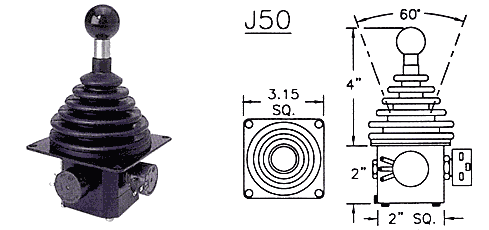
Two axis joystick 4″ handle height 60° deflection angle ( ± 30°) Ball knob Spring return to center Circular deflection pattern 10K ohm precision potentiometer Protective rubber boot (IP54 rating above panel) IP65 option available upon special request Panel mounting bracket

Multi-axis joystick 8.34″ handle height 45° deflection angle ( ± 22.5°) Spring return to center Cobra Head handle Circular deflection pattern 10K ohm precision potentiometers – all axis Three momentary switches (two illuminated, one trigger) Panel mounting bracket Protective rubber boot (IP65 rating above panel)
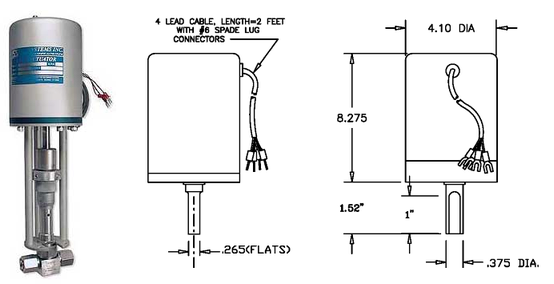
Input: 4 to 20 mA (200 ohms) or 0 to 10VDC (18KΩ) Rotation Speed : 1.5, 3, 5, 10, 20 or 40 RPM Power : 24 VDC (50 Watts min.) Dynamic Braking : Installed Limit Switches : Installed Torque Limiter : Set for Valve requirements. Wt : Approx. 21 in/lbs. max. Seating Limiter : Set […]
